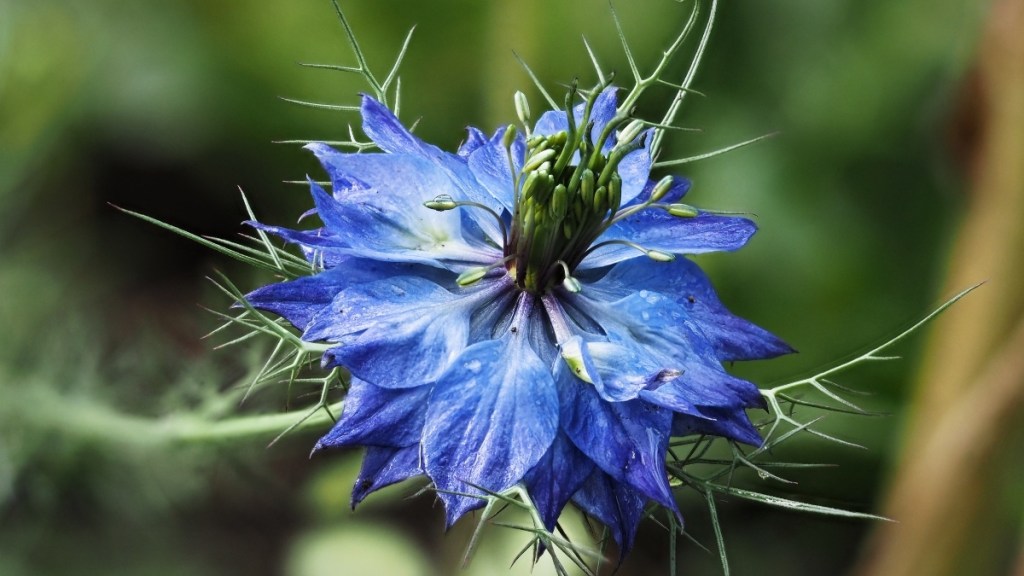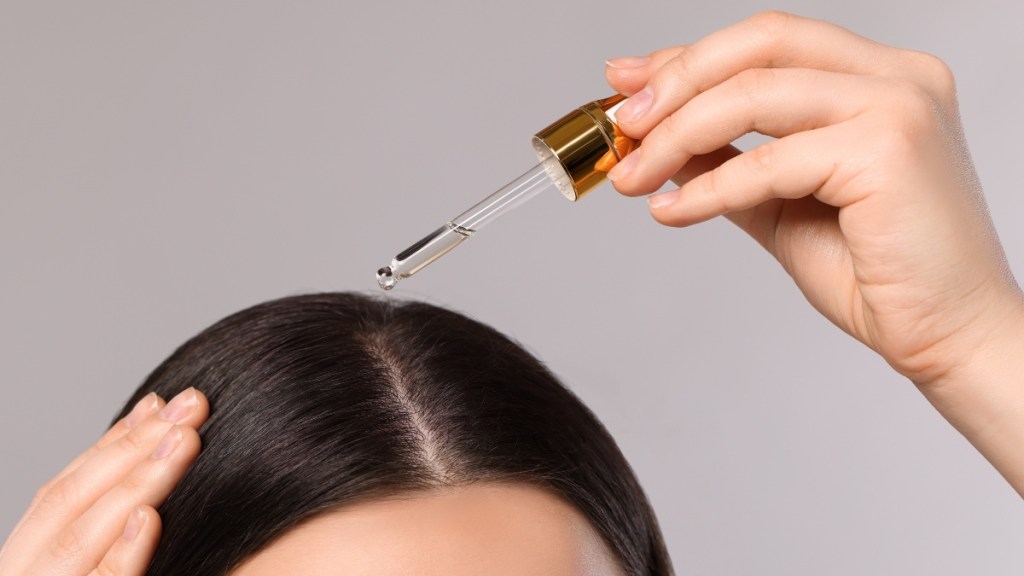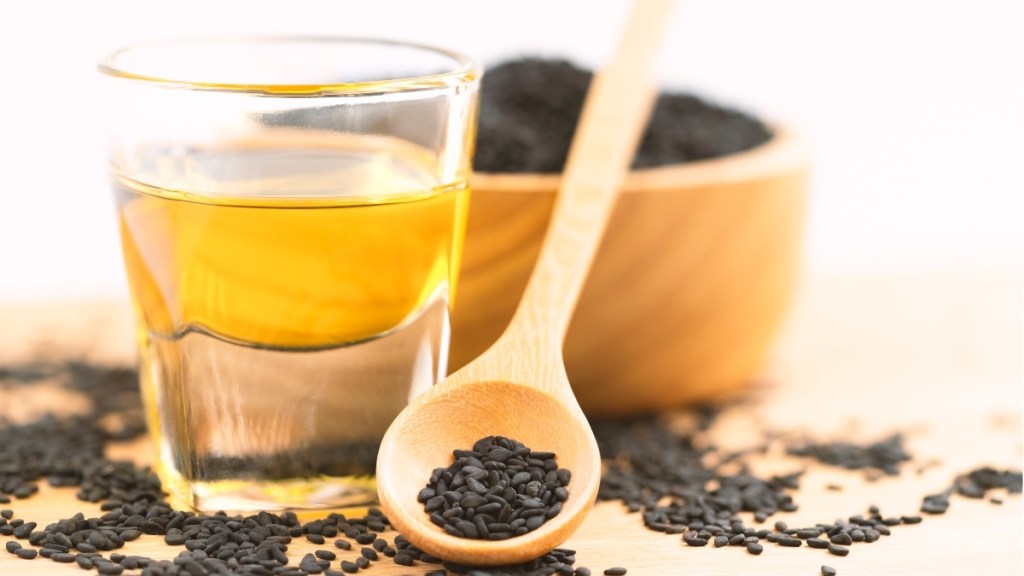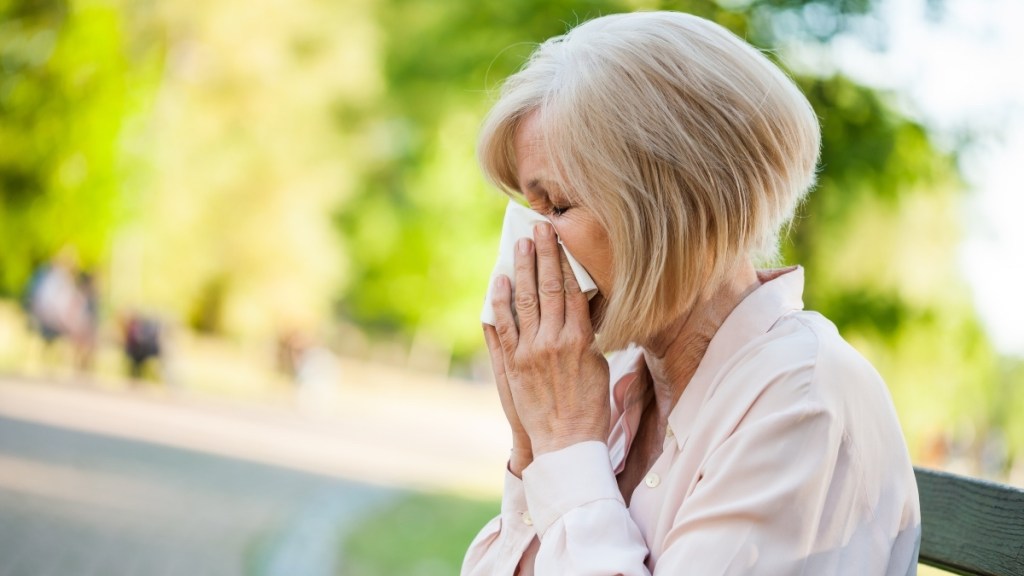The Herbal Remedy That Reverses Thinning Hair + Boosts Your Health In The Process!
Black seed oil increases hair density for 90% of women, says study — and it costs less than minoxidil

Maybe you were brushing your hair and noticed more strands falling out than usual. Or perhaps you saw a sparse spot while blow drying one morning. If you’re like us, you’ve likely experienced thinning hair, especially as you get older. The good news: There’s a buzzy new herbal treatment being touted for its ability to thicken spare strands. Black seed oil both nourishes the scalp to regrow fuller, healthier hair, plus it keep strands hydrated to thwart breakage. Here’s what you need to now about black seed oil for hair — plus more all-body benefits of this superstar ingredient.
The history of black seed oil
Black seed oil, which comes from the nigella sativa plant, has deep roots — and we’re not talking about those of the actual plant. In a review in the journal Elsevier, researchers described it as “possibly one of the most significant medicinal plants in history.” And its use is said to date back thousands of years. In fact, ancient herbalists referred to it as “the herb from heaven“.
“Black seed oil, or black cumin seed oil, is derived from a plant native to Eastern Europe and the Middle East,” explains Taz Bhatia, MD a board-certified integrative medicine doctor who hosts the podcast Super Woman Wellness. The extract from purple flowering plant “has anti-inflammatory and antiviral properties. And it has been helpful in reversing hair loss, improving the skin and scalp microbiome, and improving eczema, acne, and allergies.”

What causes hair loss in women
We typically lose about 50 to 100 strands of hair a day. But when you notice significantly more fall out, it’s considered excessive hair shedding. Research out of UCLA shows hair loss affects at least 40% of women by age 50, and often becomes even more common as we age. To blame: Everything from a family history to hair loss to seasonal weather changes to chronic stress. But one of the biggest culprits behind sparse strands for women over 50 is menopause.
As estrogen and progesterone levels dip during menopause, hair tends to become thinner and grow more slowly. These hormone shifts can also lead to an increase in androgens, a group of male hormones that shorten hair’s growth period and leads to fallout. As a result, more than 52% of postmenopausal women experience hair loss, according to research in the journal Menopause.
How black seed oil aids hair growth
“The active ingredient or the active chemical compound in black seed oil is something called thymoquinone,” says Lauren Penzi, MD, a board-certified dermatologist with MDCS Dermatology: Medical Dermatology and Cosmetic Surgery. “That’s the thing that people think is most responsible for the hair growth.”
Research shows that thymoquinone can be antibacterial, antifungal, and work as an antioxidant. And a study in the Journal of Cosmetics, Dermatological Sciences and Applications found that applying black seed oil to scalp increased hair density for 90% of folks within three months. What’s more, it boosted the thickness of strands for 100% of study participants.
In another small study, researchers found that black seed oil mixed with coconut oil improved hair growth better than just coconut oil alone. And when studying folks with telogen effluvium, a condition characterized by stress-related hair loss, researchers found 70% of people who used black seed oil for three months saw improvement in hair density and thickness. (Dr. Penzi notes, though, that this condition often resolves on its own within that time frame.) The best part: Black seed oil often costs less than minoxidil, the most common over-the-counter thinning hair treatment. (Click through to learn how holy basil boosts hair growth, too.)
Here are more ways black seed oil improves hair growth:
1. Black seed oil moisturizes to prevent breakage
Dr. Penzi explains that if your hair and scalp are dry, hair isn’t going to grow as well or look as good and you’ll have a lot more breakage. By using black seed oil topically — meaning as a hydrating oil — it naturally moisturizes your hair, including the shaft, cuticles, and follicles to ward off brittleness.

2. It fights free radicals to encourage healthy growth
“Over time, with UV rays and UV damage, there’s something called free radical damage that just accelerates the aging process,” notes Dr. Penzi. While we usually talk about this as it relates to the skin, it’s comparable with hair, too. Any time there’s inflammation in your scalp, you’re hair’s not going to grow as well, says Dr. Penzi. But the anti-inflammatory and antioxidant properties in black seed oil tame this inflammation to encourage healthier hair growth.
3. Black seed oil soothes scalp infections that cause fallout
Thanks to the antibacterial and antifungal properties in black seed oil, it helps in dealing with fungal infections that impede hair growth, says Dr. Penzi. A common type of fungal infection is seborrheic dermatitis. People with this condition develop a red or pinkish itchy rash on the scalp that can lead to hair loss. But a topical antifungal like black seed oil can help keep the scalp healthy so that hair can grow in thicker and fuller.
How to use black seed oil for hair growth
While you can take a black seed oil supplement, a topical application is your best bet when it comes to improving hair growth. “By massaging it into the scalp, black seed oil improves scalp inflammation, nourishes the hair shaft, and balances the scalp microbiome,” says Dr. Bhatia.
To get the benefits, Dr. Penzi recommends applying the oil directly on your scalp. You can also dilute it in a carrier oil oil such as jojoba or coconut oil if you have sensitive skin. To dilute it, she recommends a 3:1 ratio — so 1 Tbs. of the carrier oil to 1 tsp. of black seed oil. Dr. Penzi suggests using an eyedropper to put a few drops on the crown of your scalp and then rubbing it in. “You don’t have to be scientific about it, but as long as there’s a thin layer in your scalp, that’s okay. It doesn’t need to be dripping in oil,” she says.

For best benefits, apply the oil to your scalp every day or every other day. Since it can be greasy, you may want to put it on at night, lay an old towel down on your pillow while you sleep, then wash it out in the morning, Dr. Penzi says.
Also key: Give it time. “Hair will grow at a max of a centimeter per month,” explains Dr. Penzi. Along with being consistent about applying the oil, you also likely have to about three to six months to notice changes, she says. To that end, Dr. Penzi suggests snapping photos to help track changes. “I encourage people to take photos of their scalp and try to just power through and not look at it until your three month photos to see if it’s doing anything for you,” she says.
Sensitive skin? Do a patch test first
Research shows that black seed oil is typically safe. That said, Dr. Bhatia cautions that it can act as a blood thinner. It’s best to talk to your doctor if you plan to use the oil (either topically or as a supplement) to ensure that it won’t interact with any medications you’re on.
There can also be a small risk of allergic contact dermatitis when applied topically. This is an itchy, allergic rash that can flare up, especially for those with sensitive skin or who are eczema- or allergy-prone, says Dr. Penzi. Her advice: Do a patch test first. “Put the oil on your inner forearm for two or three nights in a row,” she says. “If you don’t have a reaction there, then you can safely go and try it in your scalp.”
What to look for in black seed oil for hair
If you’re ready to reap rewards the rewards of thicker hair, you’ll want to choose the best black seed oil for the job. Whenever possible, opt for cold-pressed liquid black seed oil. This means the oil was extract without heat, which can damage the beneficial compounds in black seed oil. Two products that fit the bill: Amazing Herbs Cold-Pressed Black Seed Oil (Buy from Amazon, $28.60) and Zhou Organic Cold-Pressed Black Seed Oil (Buy from Amazon, $19.99).
Tip: Store your bottle of black seed oil in a cool, dark place away from direct heat and sunlight to maximize its shelf life.

More benefits of black seed oil
“It’s almost impossible to sum up the extensive list of black seed oil’s health benefits,” says Dr. Bhatia. “Numerous studies suggest it can help with weight loss, blemish control and skin health, hair growth, seasonal allergies, digestive function, and more.” Here, more areas where this healing oil (whether used topically or in supplement form) really shines:
1. It eases allergies
Can’t stop sneezing and sniffling? Whether you have seasonal allergies or are bothered by indoor allergens, black seed oil can help. A study in Anti-Inflammatory & Anti-Allergy Agents in Medicinal Chemistry found that after being given black seed oil topically via nasal drops, a whopping 92% of those with allergic rhinitis either saw improvement or were free of their symptoms after six weeks. That included people with mild, moderate and even severe allergy symptoms. (Click through for more natural ragweed allergy relief.)

2. It reduces acne
You thought you were done with breakouts after your teenage years, but hormone changes during menopause can trigger acne. Luckily, black seed oil can calm breakouts. A small study in Phytotherapy Research found that those with acne who applied a black seed oil gel twice a day saw significantly fewer pimples after two months. Bonus: Research suggests black seed oil can help with psoriasis, vitiligo and eczema as well. (Old pillows can contribute to adult acne, too. Click through to learn the TikTok cleaning hack to strip old pillows and give them a deep clean.)
3. It tames harmful gut bacteria
Stomach ulcers can cause bloating, heartburn, nausea and burning stomach pain. While they can be caused by overuse of pain meds like ibuprofen and even stress, the most common cause is high levels of H. pylori, a bacteria found in the stomach that infects at least 50% of women. To get your GI system back into balance, reach for black seed oil. It eradicates H. pylori as effectively as antibiotics, plus eases symptoms like stomach pain and heartburn thanks to its antimicrobial thymoquinone. Simply take 1,000 mg. of a product with 5% thymoquinone after meals twice a day. One to try: Life Extension Black Cumin Seed Oil (Buy from Amazon, $24 for two bottles).
4. It reverses fatty liver
When your liver becomes clogged with fat, it can slow your metabolism and leave you feeling drained. But supplementing with black seed oil can help you dodge trouble. A study found taking 1 gram of black seed in supplement form twice daily for 12 weeks reversed fatty liver in 57% of patients. Plus, it helped folks lose up to 22 pounds. Researchers say black seed oil’s thymoquinone protects against cell-damaging inflammation that can cause the liver to hoard fat. (Click through for more health benefits of black seed oil capsules.)
For more ways to thwart thinning hair:
6 Dermatologist-Approved Ways To Outsmart Thinning Hair. . . Naturally
Apple Cider Vinegar For Thinning Hair: How to Use It To Boost Hair Growth & Skin Health
Thinning Hair or a Flakey Scalp? This $10 Natural Oil Is The Beauty Hero You’ve Been Waiting For
This content is not a substitute for professional medical advice or diagnosis. Always consult your physician before pursuing any treatment plan.












